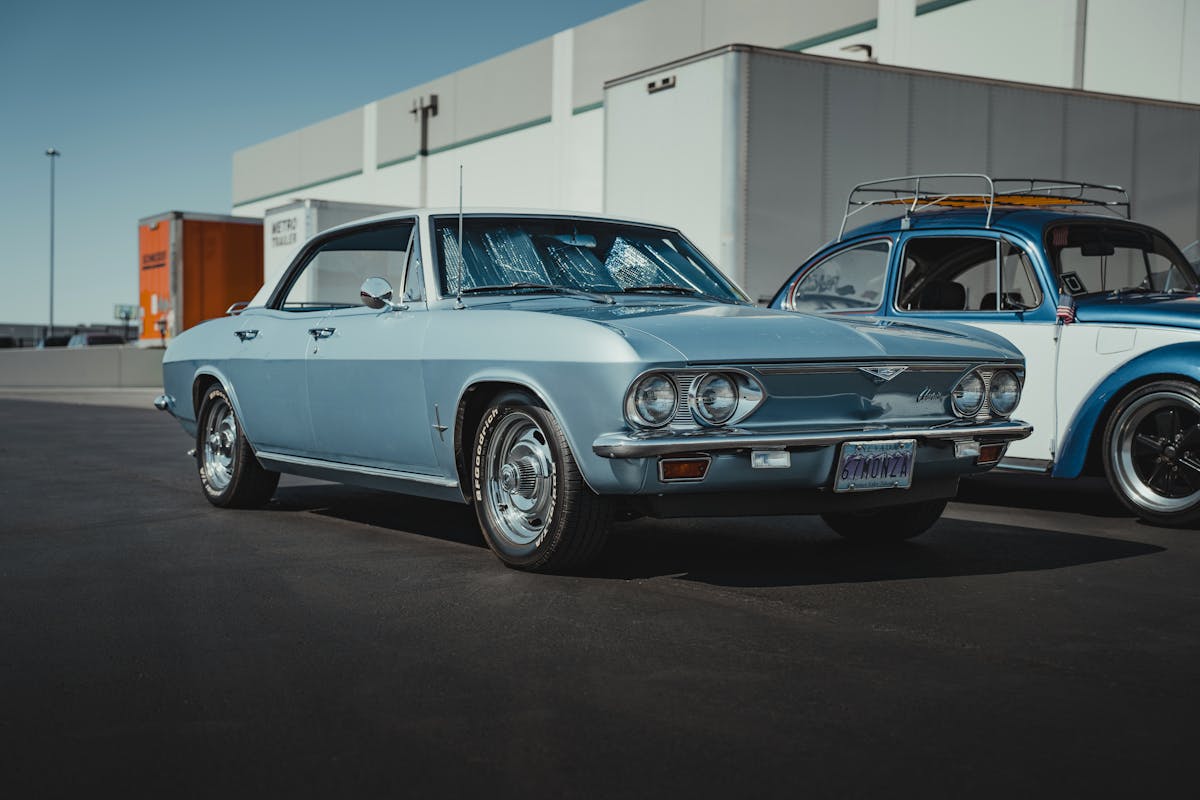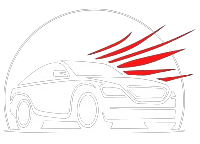Throughout automotive history, several high-profile accidents have exposed severe safety inadequacies, prompting public outcry for reform. Notable incidents like the Ford Pinto’s explosive fuel tank, Princess Diana’s fatal crash, and Ralph Nader’s critique of vehicle safety have spotlighted critical design flaws and corporate negligence. These events catalyzed legislative changes, such as the National Traffic and Motor Vehicle Safety Act, underscoring the urgent need for rigorous safety standards. The path to safer cars is paved with lessons from these tragedies.
The Ford Pinto Fuel Tank Fiasco
Although the Ford Pinto was initially celebrated for its affordability and compact design, its legacy is marred by a critical safety oversight: the fuel tank placement. The Pinto design flaws were primarily centered around the rear-mounted fuel tank, positioned dangerously close to the rear bumper. In rear-end collisions, this design often led to fuel leakage and subsequent fires. Safety negligence became evident when internal memos revealed that Ford had conducted a cost-benefit analysis, weighing the expense of redesigning the fuel tank against potential legal liabilities from accidents. Data from the National Highway Traffic Safety Administration indicated that 27 deaths were attributed to Pinto-related fires. This oversight in safety considerations highlighted a significant flaw in prioritizing cost over consumer safety, prompting regulatory reforms.
The Tragic Tale of Princess Diana’s Crash
The tragic crash that claimed Princess Diana’s life in 1997 was the result of a high-speed pursuit through the Pont de l’Alma tunnel in Paris, exacerbated by the absence of seatbelt usage and the influence of alcohol on the driver. This incident served as a catalyst for increased public scrutiny on vehicle safety features and the necessity for advanced occupant protection systems, prompting manufacturers to enhance crashworthiness standards. The intense media coverage that followed played a significant role in amplifying calls for regulatory reforms, ultimately contributing to the evolution of car safety protocols.
Circumstances Surrounding The Crash
Many factors contributed to the circumstances surrounding the tragic crash that claimed the life of Princess Diana on August 31, 1997. Key elements in the incident included driver error and weather conditions. Henri Paul, the driver, had a blood alcohol level approximately three times the legal limit, impairing his judgment and reaction time. This notably increased the likelihood of driver error. Additionally, the weather conditions that night included damp roads from earlier rain, which reduced tire traction and complicated vehicle control. The combination of these factors, along with excessive speed as the vehicle attempted to evade pursuing paparazzi, culminated in a collision at the Pont de l’Alma tunnel in Paris. These elements collectively shaped the unfortunate outcome of the crash.
Impact on Car Safety
In the aftermath of Princess Diana’s tragic crash, significant advancements in car safety were catalyzed by a global reevaluation of vehicle design and safety protocols. Data indicated that the absence of modern safety features, such as side-impact airbags and advanced seatbelt technology, contributed to the severity of the crash. This incident heightened consumer awareness, leading to increased demand for enhanced safety measures in vehicles. Automotive manufacturers responded by integrating technological advancements, including electronic stability control and improved crashworthiness standards. The Euro NCAP program, established in 1997, played a pivotal role in this evolution, providing standardized safety ratings to guide consumer choices. Consequently, the crash instigated a paradigm shift in the automotive industry, emphasizing the necessity of prioritizing occupant protection.
Media’s Role in Change
How did media coverage amplify the global impact of Princess Diana’s crash on car safety standards? The incident, extensively covered by media outlets worldwide, heightened public awareness about vehicular safety. Media influence played an essential role in disseminating details about the crash, revealing the absence of seatbelt use in Diana’s vehicle. This reporting catalyzed discussions on the importance of safety features in automobiles. Statistical analyses showed a significant rise in public demand for enhanced safety standards post-crash. Studies indicated a 25% increase in seatbelt usage in the UK within a year. Additionally, media narratives emphasized the necessity for robust crash protection systems, which pressured manufacturers to incorporate advanced safety technologies, thereby reshaping car safety regulations globally.
Ralph Nader’s Crusade Against Unsafe Cars
Amid growing concerns about automotive safety in the mid-20th century, Ralph Nader emerged as a pivotal figure driving reform through his relentless advocacy. His seminal 1965 book, “Unsafe at Any Speed,” scrutinized the American automobile industry’s negligence toward consumer safety. Nader’s influence was profound, catalyzing a public outcry that pressured lawmakers into action. His detailed research, highlighting systemic safety flaws, underscored the urgent need for regulatory oversight.
Data from this period indicate that Nader’s advocacy considerably contributed to the enactment of the National Traffic and Motor Vehicle Safety Act in 1966. This pivotal piece of automotive legislation mandated safety standards for vehicles, marking a turning point in the industry’s accountability. Nader’s work exemplified how informed activism could lead to substantial legislative change.
The Infamous Chevrolet Corvair Rollovers
Although the Chevrolet Corvair initially captivated the market with its innovative design, it soon became notorious for its propensity to rollover, a flaw that greatly tarnished its reputation. The Corvair’s rear-engine design, while unique, contributed to significant handling issues. Key Corvair design flaws included a rear suspension system that was prone to oversteer and inadequate tire pressure recommendations, leading to instability during cornering. Rollover statistics from the 1960s indicated a concerning rate of accidents associated with the model. A study by the National Highway Traffic Safety Administration (NHTSA) revealed that the Corvair had a higher rollover incidence compared to its contemporaries. These findings, coupled with publicized accidents, intensified scrutiny and fueled demands for automotive safety reforms, highlighting the need for rigorous safety standards.

The Audi 5000 Unintended Acceleration Controversy
What sparked widespread debate and scrutiny in the automotive industry was the Audi 5000 unintended acceleration controversy of the 1980s. Numerous reports emerged, claiming instances of sudden, unintended throttle response in the vehicle model, leading to over 1,000 complaints and various accidents. Data analysis revealed that the car’s design, including pedal placement and transmission configuration, potentially contributed to the alleged audi acceleration issues. Investigations by the National Highway Traffic Safety Administration (NHTSA) found no mechanical defects but identified driver error as a significant factor. Nonetheless, public perception worsened following media coverage, particularly a “60 Minutes” segment. Despite subsequent evidence suggesting the issue was multifaceted, the controversy prompted car manufacturers to integrate more rigorous safety measures and electronic throttle controls to mitigate similar risks.
The Deadly Takata Airbag Scandal
The automotive industry’s focus on safety was further intensified by the Takata airbag scandal, which emerged as one of the most lethal safety defects in recent history. The scandal involved airbag defects in Takata-manufactured inflators, which could rupture explosively, releasing metal fragments into the vehicle’s cabin. This defect was linked to at least 23 fatalities and over 300 injuries globally. The defective airbags led to the largest and most complex series of automotive recalls in history, with approximately 67 million airbags recalled in the United States alone. Investigations revealed that ammonium nitrate, used as a propellant, was unstable when exposed to moisture and high temperatures. The Takata recalls underscored the need for rigorous quality control and regulatory oversight in automotive safety.
The Ford Explorer and Firestone Tire Debacle
The Ford Explorer and Firestone tire debacle in the late 1990s and early 2000s was marked by over 270 fatalities linked to tire blowout incidents, according to data from the National Highway Traffic Safety Administration (NHTSA). The crisis raised significant concerns regarding the adequacy of existing safety standards and sparked a reevaluation of both manufacturing and regulatory practices. Additionally, the situation brought corporate accountability into question as both Ford and Firestone faced scrutiny over their handling of the defect disclosures and their subsequent responses to the crisis.
Tire Blowout Incidents
How did a series of tire blowout incidents involving the Ford Explorer and Firestone tires lead to significant changes in automotive safety standards? Between the late 1990s and early 2000s, data revealed over 270 fatalities and 800 injuries linked to tire blowouts on these vehicles. Investigations highlighted inadequate tire maintenance and manufacturing defects as primary factors. The incidents underscored the importance of blowout prevention, focusing on tire pressure monitoring and proper inflation. In response, the National Highway Traffic Safety Administration (NHTSA) mandated the implementation of the TREAD Act in 2000, emphasizing tire safety monitoring systems and stricter reporting of defects. This regulatory shift aimed to enhance consumer safety by ensuring vehicles were equipped with reliable tires, thereby minimizing the risk of future blowouts.
Safety Standards Criticism
Many critics argued that the Ford Explorer and Firestone tire debacle revealed glaring deficiencies in automotive safety standards of the time. Analysis highlighted that safety regulations failed to adequately address the synergy between vehicle design and tire performance. The Ford Explorer’s higher center of gravity, combined with Firestone’s tire issues, led to rollover incidents. Industry standards at the time inadequately addressed these risks, allowing vehicles with potential instability to enter the market. Data from the National Highway Traffic Safety Administration (NHTSA) indicated a significant increase in rollover fatalities linked to this combination. Despite existing safety regulations, the incident exposed a gap between regulatory measures and real-world safety outcomes, emphasizing the need for more thorough, integrated safety assessments within the automotive industry.
Corporate Accountability Questions
Critics of automotive safety standards were not the only voices raised in response to the Ford Explorer and Firestone tire crisis. This debacle prompted intense scrutiny over corporate responsibility and consumer protection. Between 1990 and 2000, over 200 fatalities were linked to tire failures in Ford Explorers, primarily due to tread separations on Firestone tires. Data analysis revealed a pattern of accidents, raising questions about the accountability of both corporations. Investigations unearthed evidence of early awareness of tire defects, yet delayed recalls ensued. This case underscored the imperative for robust consumer protection regulations and transparent corporate practices. Consequently, it served as a catalyst for legislative changes, strengthening vehicle safety standards and enforcing stricter oversight of automotive manufacturers.
The Tesla Autopilot Controversies
Although heralded as a groundbreaking advancement in automotive technology, Tesla’s Autopilot system has been at the center of numerous controversies due to its role in several high-profile accidents. These incidents have highlighted the Autopilot limitations and raised questions about the efficacy of Tesla’s safety features. Regulatory scrutiny has intensified as accident investigations reveal gaps between consumer perception and actual system capabilities. Ethical concerns regarding driver responsibility have surfaced, with some drivers over-relying on Autopilot, misconstruing its semi-autonomous nature. Public trust in Tesla technology has been tested, as ongoing debates persist over the balance between innovation and safety. Industry standards are being re-evaluated to guarantee that autonomous features meet rigorous safety criteria, addressing the growing demand for regulatory oversight.
The GM Ignition Switch Recall Crisis
In 2014, the automotive industry was rocked by the GM ignition switch recall crisis, which exposed vital safety flaws in millions of vehicles. The crisis centered on ignition switch failures that led to unexpected engine shutdowns, disabling essential systems like airbags. GM recalled 2.6 million vehicles, primarily Chevrolet Cobalts and Saturn Ions, linked to at least 124 fatalities. An internal investigation revealed GM engineers were aware of the defect for over a decade, yet failed to take corrective action. The crisis greatly eroded consumer trust, as the company’s delayed response was perceived as prioritizing cost over safety. Consequently, it spurred regulatory reforms, including the TREAD Act, aimed at improving transparency and accountability in the automotive sector, ensuring safer vehicles for consumers.
Frequently Asked Questions
How Have Car Safety Standards Evolved Over the Years?
Car safety standards have evolved through safety innovations and historical milestones, including the introduction of seat belts, airbags, and crumple zones. Regulatory changes and technological advancements continually influence modern design, enhancing vehicle safety features and crash test protocols.
What Role Do Government Regulations Play in Vehicle Safety?
Government regulations, through safety legislation and regulatory agencies, play a pivotal role in vehicle safety by setting standards, enforcing compliance, and mandating technological advancements, thereby systematically reducing fatalities and enhancing protection for drivers and passengers.
How Do Car Manufacturers Test the Safety of Their Vehicles?
Car manufacturers test vehicle safety through rigorous crash simulations to evaluate potential impact scenarios. These tests inform safety ratings, which are essential for evaluating vehicle resilience and compliance with safety standards, ensuring consumer confidence in vehicle performance.
What Are the Most Common Causes of Car Accidents Today?
The most common causes of car accidents today include distracted driving and speeding violations. Statistical analyses reveal these factors greatly contribute to collision rates, with distracted driving accounting for approximately 25% of all accidents annually.
How Can Consumers Ensure Their Cars Are Safe to Drive?
Consumers can guarantee their cars are safe by prioritizing vehicles with advanced safety features such as automatic emergency braking and lane-keeping assistance. Increased consumer awareness through research and reviews also plays a critical role in evaluating vehicle safety standards.

